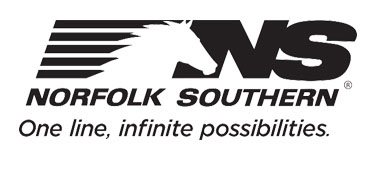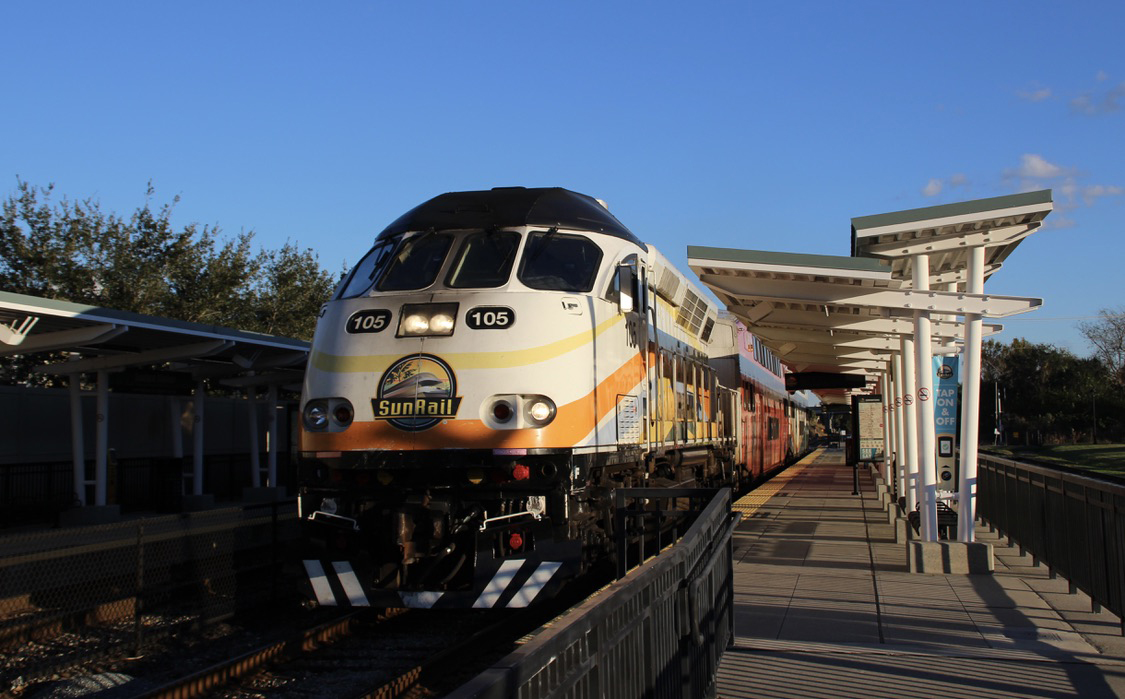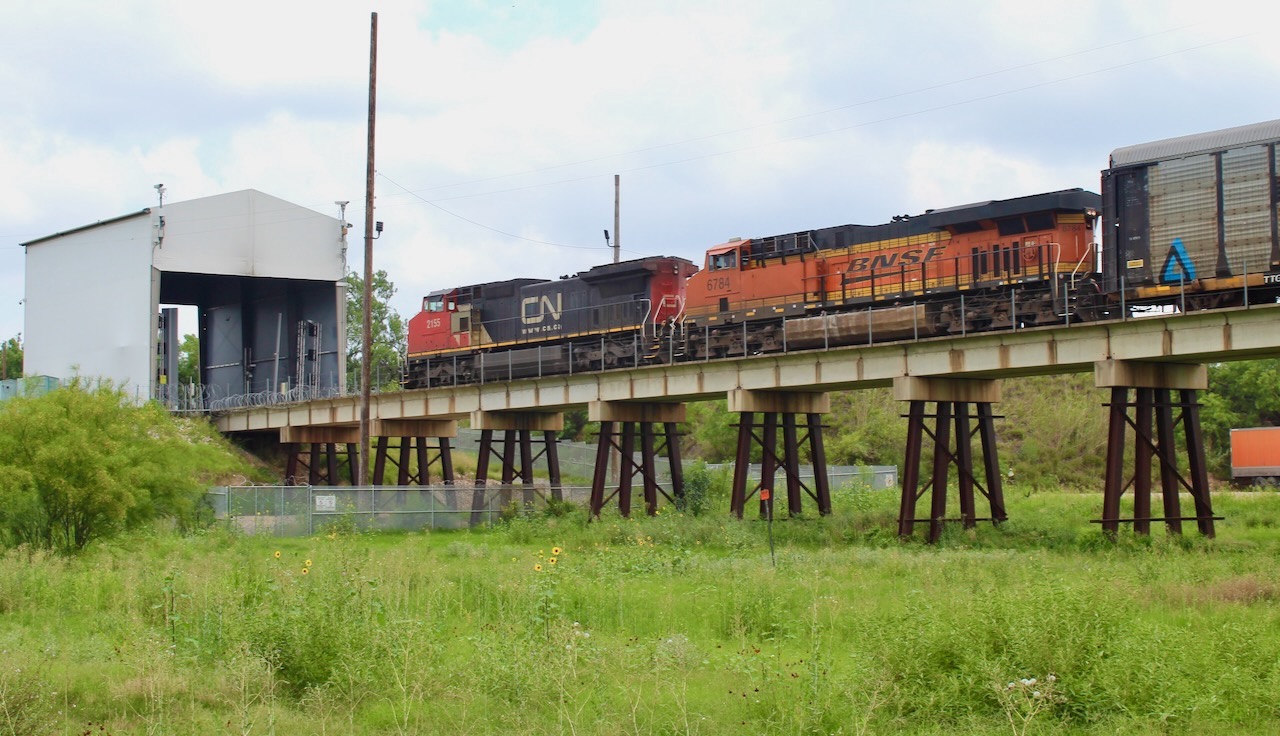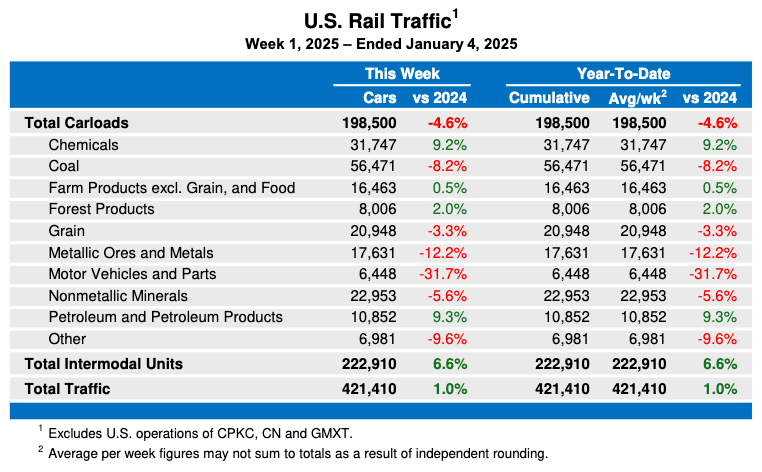A few times a week, the international intermodal train linking St. Louis; Louisville, Ky.; and Norfolk, Va.; pauses in Knoxville, Tenn., to pick up a cut of 20 or so coal loads bound for export form the pier at Lamberts Point, Va.
Coal riding the head end of an intermodal train?
“That worked just fine,” Alan Shaw, Norfolk Southern’s chief marketing officer, told the RailTrends 2018 conference last week.
The 23G typically has a long consist that moves with distributed power. But there’s room for a few coal cars, and both the intermodal boxes and the coal are headed for the port.
Catching a ride on an intermodal train means three things: The coal doesn’t sit in Knoxville until enough volume builds to run a unit train. The coal, and hoppers, move faster, reducing cycle time. And NS can drop train starts by shifting the bulk traffic into intermodal trains, which saves locomotives, fuel, and crews while opening up capacity on the main line.
It’s a classic example of moving traffic on the next available train, which is one of the key elements of Precision Scheduled Railroading and its focus on efficiency.
The coal is likely to continue moving to port this way for a while, but NS is considering adding some finished vehicle traffic into 23G that might kick the coal off.
NS has been redesigning its local and yard service through a process called clean-sheeting.
“What you do is you process engineer the delivery of the local service with customers,” Shaw says. “Figure out where those big blocks of cars are going to go, and then match that up to your train schedule across your network so the cars aren’t dwelling.”
Moving coal on 23G is one example of the process, he says.
NS is doing this methodically across the system, working with customers on operational changes. Executives have said the clean-sheeting process will continue into 2019 before major train-plan changes are made. They’ve promised to provide more details at an investor day scheduled for February.
The goal, Shaw says, is to provide more reliable and consistent service for customers while improving the railroad’s efficiency and financial performance.















Paul Bouzide – standard operating practice for many, many years puts the heavier cars (also haz-mat’s) in the front of the train, lighter loads and empties in the rear. This is for the purpose of train dynamics, slack run-in and run-out, etc. Doing the reverse would put the inertia of heavier cars pushing into the lighter cars, substantially increasing the risk of broken couplers and/or derailment.
Sidney Vaught *international* boxes don’t require premium velocity like domestic 53s and trailers do (but do require consistent service).
Don Oltmann that’s an interesting point. Is it problematic for train handling if the (I’m led to understand short) cut of coal is at the head end with the intermodal well cars behind it?
You REALLY have to watch how you build your trains when you start to do this sort of thing. Track and train dynamics can kill you. One derailment wipes out years of savings. Letting coal (and grain!!!) flow into the merchandise network is much less risky.
Seems like a nothing-burger to me. Didn’t they used to “fill out” freight trains back in the dark ages?
I sure wish somebody could figure out how to get some of trucks off the highways. But, it seems you’d need a “fast precession” railroad and a (old-school) “slow precision” railroad to do that.
Adding vehicle traffic to 23g used to happen all the time, that is nothing new. Counterpart 22a has been adding traffic to fill it out going north out of Sevier Yard for some time now.
Oh, wow this is really innovative! Talk about reinventing the square wheel. Great for the coal, no hurry on intermodal right?
Truckers pulling doubles are required to have the heavy box in front to eliminate fishtailing.
Jack, yes the coal and containers go to different ports but they are very close to each other. Shouldn’t be too hard to drop one block and continue on with the other.
What a crock of PR BS. 20 cars has never constituted a Unit Coal Train – just loose car coal. You don’t terminate coal at the same physical location that the other commodities of the train are terminated, creating additional switching and handling at destination. This crap isn’t PSR, it is screwing up operations 101.
If the train still does run with a DPU (last time I saw it when I was down there it had one), that can be used to control the slack and such but I would still prefer to have the loads up front if it was me. Some guys when they had a DPU train never took them out of sync mode and did fine. Me, I would put the fence up and run them independent quite a bit during the course of a trip.
“But there’s room for a few coal cars, and both the intermodal boxes and the coal are headed for the port. ” Yes, but to different parts of Norfolk. I don’t know about NS’ facilities in Norfolk, but I’m reasonably that Lamberts Point coal operation and the Port’s international terminals aren’t at the same place.
Steven, that’s some great insight, and seems to be über important to safely getting a train from A to B. I hope the people building the trains know and understand this!!
Give me the tonnage at the front. Put the stacks behind. I don’t want the coal at the back coming over the top of a hill and running in on me if I am down at the bottom of a sag or trying to come out of it. Anyone that has seen the “A” Line (as I am guessing Chris might have) knows it is a sawtooth profile pretty much east of Bulls Gap.
Now do boxcars next.